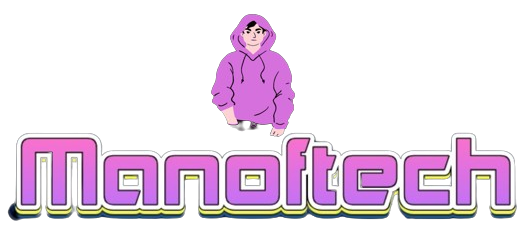Impact of Technology on Education
In the rapidly evolving landscape of education, technology has emerged as a powerful catalyst, revolutionizing the way we teach and learn. This article explores the multifaceted impact of technology on education, from enhancing accessibility and personalized learning to fostering collaboration and preparing students for the demands of the 21st century.
Digital Transformation in Learning
Accessibility and Inclusivity: Technology has broken down barriers to education, making learning more accessible and inclusive. Online platforms, digital resources, and e-learning modules provide flexibility for diverse learners, transcending geographical constraints and accommodating various learning styles.
Personalized Learning: Adaptive learning platforms leverage technology to cater to individual student needs. Machine learning algorithms analyze students’ progress, adapting content and pacing to ensure personalized learning experiences that align with each student’s strengths and challenges.
The Role of EdTech
Interactive Learning Tools: Educational Technology (EdTech) introduces interactive tools that engage students in immersive learning experiences. Virtual labs, simulations, and educational games make abstract concepts tangible, fostering a deeper understanding of complex subjects.
Blended Learning Models: Blending traditional classroom instruction with online resources, blended learning models create a dynamic and flexible learning environment. This approach combines the benefits of face-to-face interaction with the advantages of digital tools, offering a holistic educational experience.
Collaborative Learning Platforms
Virtual Classrooms: The rise of virtual classrooms facilitates real-time collaboration among students and educators. Video conferencing, discussion forums, and collaborative documents create a globalized learning community, transcending physical boundaries and promoting cross-cultural exchanges.
Cloud-Based Collaboration: Cloud-based platforms enable seamless collaboration on projects and assignments. Students can work together in real time, sharing documents and ideas regardless of their physical locations. This fosters teamwork and prepares students for collaborative work environments in the professional world.
Enhancing Teacher Effectiveness
Professional Development: Technology supports ongoing professional development for educators. Online courses, webinars, and collaborative platforms enable teachers to stay updated on the latest pedagogical approaches and incorporate innovative teaching methods into their classrooms.
Data-Driven Instruction: Educational data analytics provide insights into student performance. Teachers can analyze data to identify areas where students may need additional support, allowing for targeted interventions and personalized instruction.
Bridging Gaps in Education
Remote and Distance Learning: Especially highlighted during global challenges such as the COVID-19 pandemic, technology facilitates remote and distance learning. Virtual classrooms, online assessments, and digital resources ensure continuity of education in situations where physical attendance is restricted.
Closing Socioeconomic Gaps: Technology helps bridge socioeconomic gaps in education. Initiatives providing students with access to devices and internet connectivity contribute to leveling the playing field, ensuring that all students, regardless of their economic background, have equal opportunities.
Skills for the 21st Century
Digital Literacy: In the digital age, digital literacy is a fundamental skill. Integrating technology into education equips students with the ability to navigate digital tools, critically evaluate information, and adapt to the ever-changing technological landscape.
Coding and Computational Thinking: Introducing coding and computational thinking early in education prepares students for the demands of the future workforce. These skills enhance problem-solving abilities and foster a deeper understanding of technology’s role in various fields.
Challenges and Considerations
Access Disparities: Despite strides in improving accessibility, disparities in access to technology persist. Ensuring that all students, regardless of their socioeconomic background, have equal access to devices and reliable internet connectivity remains a significant challenge.
Digital Fatigue: The increased reliance on digital platforms has raised concerns about digital fatigue and screen time. Balancing digital and offline activities is crucial to maintaining the well-being of students and educators.
Future Trends and Innovations
Artificial Intelligence (AI) in Education: The integration of AI in education holds immense potential. AI-powered tools can provide instant feedback, create adaptive learning pathways, and assist in developing more personalized learning experiences.
Augmented and Virtual Reality (AR/VR): AR and VR technologies offer immersive learning experiences. From virtual field trips to interactive simulations, these technologies have the potential to enhance understanding and engagement in various subjects.
The Importance of Cybersecurity
Protecting Student Data: With the increasing reliance on digital platforms, cybersecurity becomes paramount. Ensuring the privacy and security of student data is a critical consideration in building trust in the use of technology in education.
Cybersecurity Education: As part of digital literacy, educating students about cybersecurity is essential. Teaching responsible online behaviour and awareness of potential risks prepares students for safe navigation in the digital world.
The impact of technology on education is transformative, reshaping the educational landscape and preparing students for a future that demands digital fluency. From fostering personalized learning experiences to promoting collaboration and addressing global challenges in education, technology continues to play a pivotal role in shaping the way we teach and learn. As we navigate the evolving intersection of technology and education, a thoughtful and inclusive approach is essential to ensure that the benefits of technology are harnessed for the greater good, providing quality education opportunities for all. Embracing these innovations responsibly positions education at the forefront of a digital era where knowledge knows no bounds.


